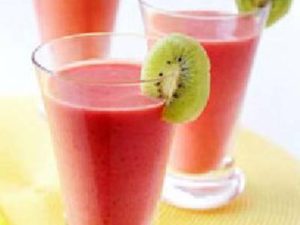Fat, Salt and Sugar: Not All Bad
Fat, Salt and Sugar: Not All Bad
Forcing children to eat food doesn’t work. Neither does forbidding foods. When children think that a food is forbidden by their parents, the food often becomes more desirable.
It’s important for both children and adults to be sensible and enjoy all foods and beverages, but not to overdo it on any one type of food. Sweets and higher-fat snack foods in appropriate portions are OK in moderation.
The following is information about fat, sugar, and salt and dietary recommendations based on recommendations from the US Department of Agriculture and the US Department of Health and Human Services.
Encouraging Healthy Eating for a Healthy Heart
Childhood is the best time to start heart healthy eating habits, but adult goals for cutting back on total fat, saturated fat, trans fat, and cholesterol are not meant generally for children younger than 2 years.
Fat is an Essential Nutritent for Children
Fat supplies the energy, or calories, children need for growth and active play and should not be severely restricted.
Dangers of High Fat Intake
However, high fat intake—particularly a diet high in saturated fats—can cause health problems, including heart disease later in life. Saturated fats are usually solid at room temperatures and are found in fatty meats (such as beef, pork, ham, veal, and lamb) and many dairy products (whole milk, cheese, and ice cream).
For that reason, after age 2 children should be served foods that are lower in fat and saturated fats.
Healthier, More Low-Fat, Low-Cholesterol Foods for Children Over Age 2:
Poultry
Fish
Lean meat (broiled, baked, or roasted; not fried)
Soft margarine (instead of butter)
Low-fat dairy products
Low-saturated fat oils from vegetables
Limiting egg consumption
The General Rule on Fats
As a general guideline, fats should make up less than 30% of the calories in your child’s diet, with no more than about one-third or fewer of those fat calories coming from saturated fat and the remainder from unsaturated (polyunsaturated or monounsaturated) fats, which are liquid at room temperature and include vegetable oils like corn, safflower, sunflower, soybean, and olive.
Some parents find the information about various types of fat confusing. In general, oils and fats derived from animal origin are saturated. The simplest place to start is merely to reduce the amount of fatty foods of all types in your family’s diet.
Note: Whole milk is recommended for children 12 to 24 months of age. However, you child’s doctor may recommend reduced-fat (2%) milk if your child is obese or overweight or if there is a family history of high cholesterol or heart disease. Check with your child’s doctor or dietition before switching from whole to reduced-fat milk.
Serve Children Foods Low in Salt
Table salt, or sodium chloride, may improve the taste of certain foods. However, researchers have found a relationship between dietary salt and high blood pressure in some individuals and population groups. High blood pressure afflicts about 25% of adult Americans and contributes to heart attacks and strokes.
Take the Salt Shaker Off the Table
The habit of using extra salt is an acquired one. Thus, as much as possible, serve your child foods low in salt. In the kitchen, minimize the amount of salt you add to food during its preparation, using herbs, spices, or lemon juice instead. Also, take the salt shaker off the dinner table, or at least limit its use by your family.
Check Sodium Levels in Processed Foods
Processed foods often contain higher amounts of sodium. Check food labels for levels of sodium in:
Processed cheese
Instant puddings
Canned vegetables
Canned soups
Hot dogs
Cottage cheese
Salad dressings
Pickles
Certain breakfast cereals
Potato chips and other snacks
Sugar in Your Child’s Diet: More Than Just a Sweetener
Caloric sweeteners range from simple sugars, like fructose and glucose, to common table sugar, molasses, honey, and high fructose corn syrup. Although the main use of sugar is as a sweetener, sugar has other uses. For example, sugar can be used as a preservative, can change the texture of foods, and can enhance flavors and add color.
Sugar Supplies Energy
Sugars in foods, whether natural or added, provide calories—the fuel that supplies energy necessary for daily activities. And if given the choice, many children would probably request sugary foods and beverages for breakfast, lunch, and dinner—research shows that humans are naturally drawn to sweet tastes.
Too Much Sugar Means Too Many Calories
Parents should keep in mind that calories from sugar can quickly add up and over time can lead to weight gain, and sugar also can play a role in the development of tooth decay.
Source:https://www.healthychildren.org/English/healthy-living/nutrition/Pages/Fat-Salt-and-Sugar-Not-All-Bad.aspx
http://www.pakparenting.com/fat-salt-sugar-not-bad/http://www.pakparenting.com/wp-content/uploads/2016/08/saltfat-and-sugar.jpghttp://www.pakparenting.com/wp-content/uploads/2016/08/saltfat-and-sugar-150x150.jpgPregnancyFat, Salt and Sugar: Not All Bad Forcing children to eat food doesn’t work. Neither does forbidding foods. When children think that a food is forbidden by their parents, the food often becomes more desirable. It’s important for both children and adults to be sensible and enjoy all foods and beverages,...Pak Parenting Teamkhadija Imtinanadmin@pakparenting.comAdministratorPak Parenting






Leave a Reply